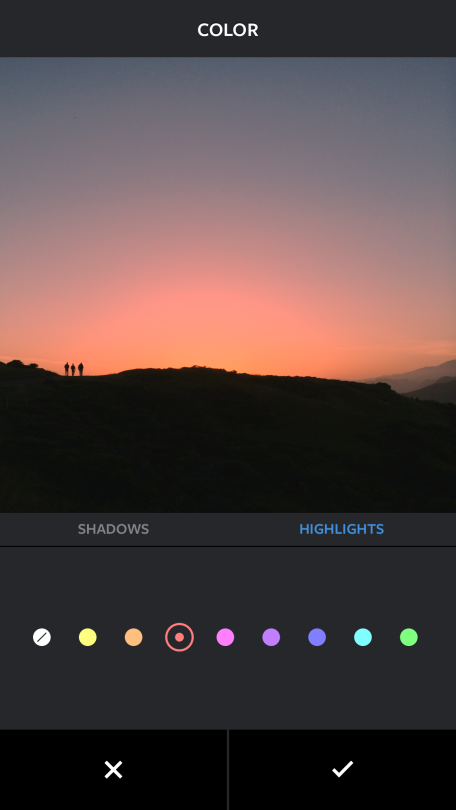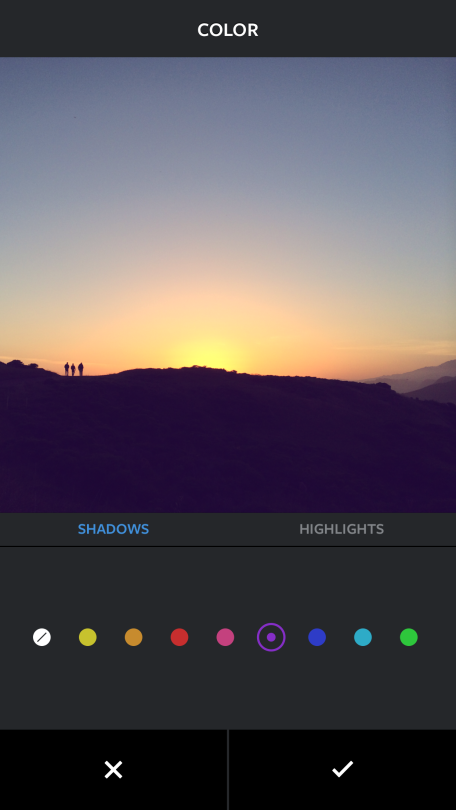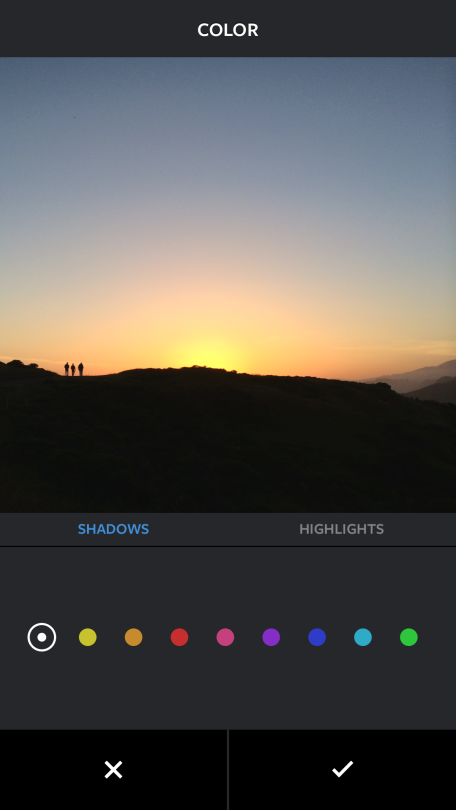
Fade, as you might guess, mutes colors and softens lines. The look is distinctly old-school darkroom, and is adjusted with Instagram’s familiar slider mechanism. Color presents a range of hues with which to tint images, but lacks the aforementioned fine-tuning tool — if you were hoping for nuance, you’ll be disappointed.
Color and Fade will make their way to Android devices first, as the Instagram version 6.19.0 will roll out through the Google Play Store today. Meanwhile, iOS users will receive an equivalent update “in a few days.”
The new effects follow a December refresh which added five new filters — Slumber, Crema, Ludwig, Aden, and Perpetua — and a filter management tool. The earlier summer update introduced tools to change filter intensity and fine-tune lighting levels with brightness, contrast, highlight, and shadows.
The changes come at a time when Facebook is attempting to boost Instagram’s profitability. The social network initially worked gradually towards recouping its $1 billion investment by slowly incorporating ads into users’ feeds, but has recently become more assertive. The year 2013 saw the integration of video ads, and last month, Facebook announced “carousel ads” for Instagram, tappable interactive ads that link to outside apps and websites.
The degree to which Facebook values Instragram’s ad units is no more evident than in the case of the “Uploader for Instagram” app shutdown earlier this week. The app, which allowed Mac users to upload photos directly to Instagram, was pulled by its 17-year-old developer after he received a letter from the company demanding its removal from the Mac App Store. While the app allegedly violated Instagram’s Terms of Service, its potentially graver crime was skirting the ads which populate the mobile clients.
Instagram’s popularity is unlikely to diminish anytime soon, and the updates are very much welcome, but Facebook will someday have to reconcile the Instagram community’s culture — pure, unblemished showcasing of creativity — with its shareholder imperative for profit.
Editors' Recommendations
- Google is making it easier for you to find and download Android apps
- Android phones are about to get a major iMessage feature
- Are you having iPhone alarm problems? A fix is coming soon
- An Apple insider just revealed how iOS 18’s AI features will work
- The most common Skype problems and how to fix them







